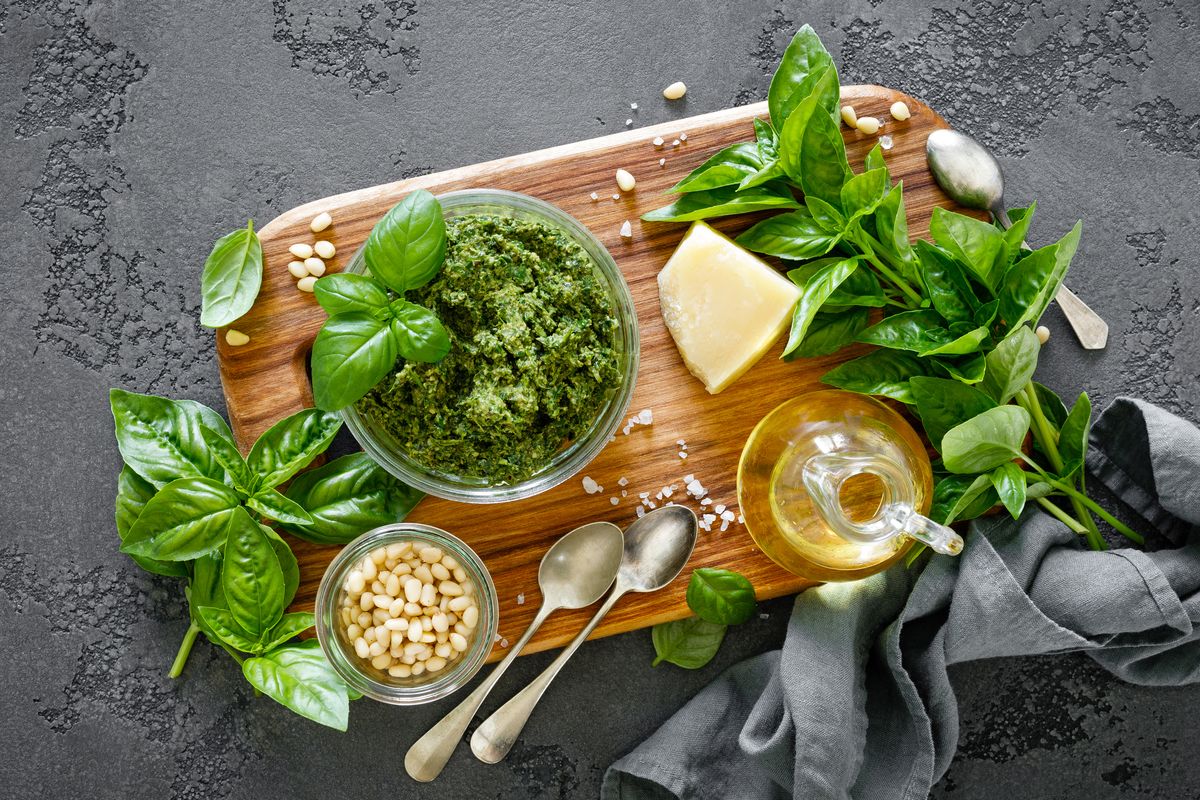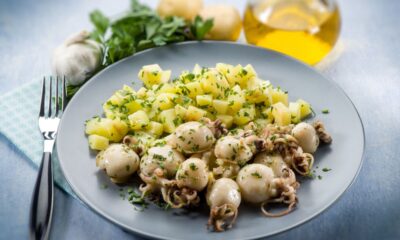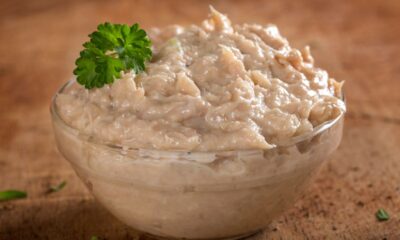Recipes
In honor of Genoa, we prepare pasta with traditional pesto
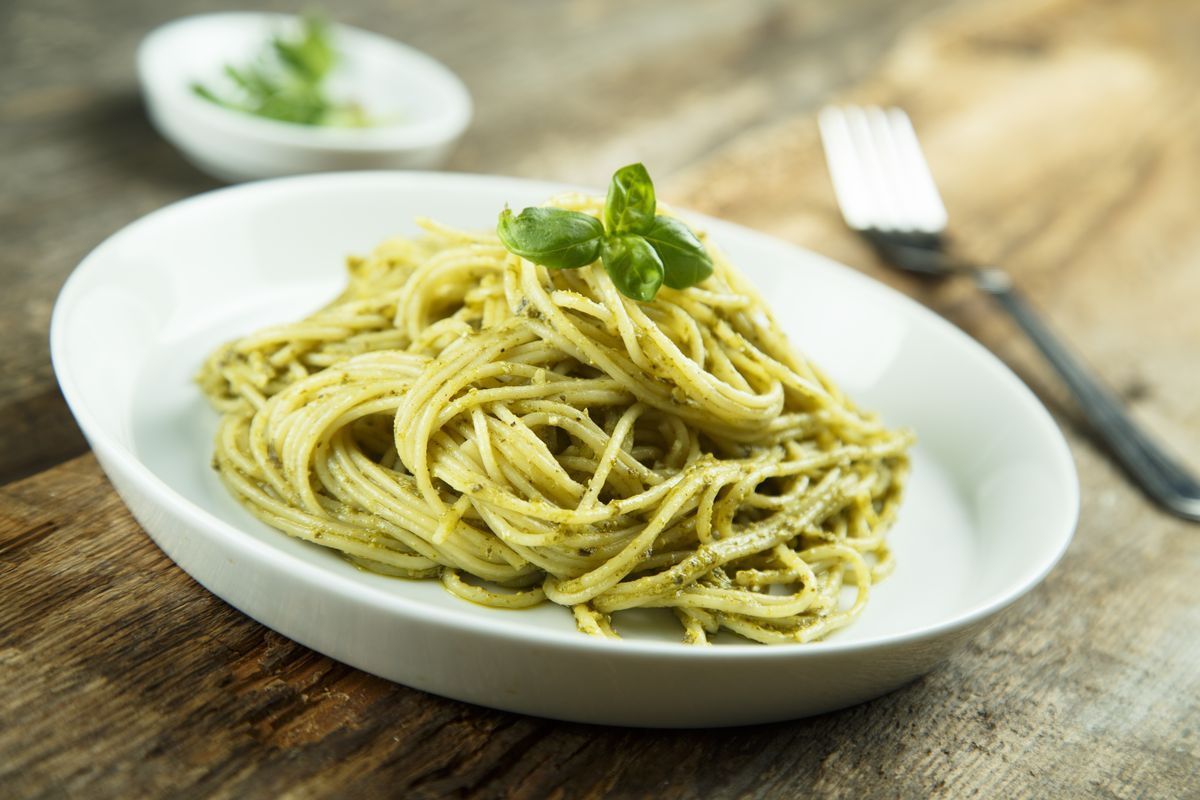
Pasta with pesto is a simple and quick recipe to prepare a delicious fragrant and flavourful first course.
Pasta and pesto are a perfect combination, rich in flavour, tradition and inviting aromas . This first course is undoubtedly one of the best known and loved in Italy and abroad, and after pasta with tomato sauce, it is a must in Italian cuisine.
But have you ever tried to prepare the basil pesto recipe with your own hands? With a few tricks and secrets, we assure you that in a short time you will be able to create a creamy and delicious sauce!
To prepare this sauce you can use the mortar or more simply an immersion blender. The important thing, however, is to blend at low speed and at regular intervals in order to prevent the mixer from overheating and the basil from oxidizing. Let's see immediately how to prepare this wonderful dish: here is the recipe for pasta with Genoese pesto!
- Pasta with pesto
- Recipe and tips for making Genoese pesto
- Pesto and tradition
- Recipes
- storage
- History and origins
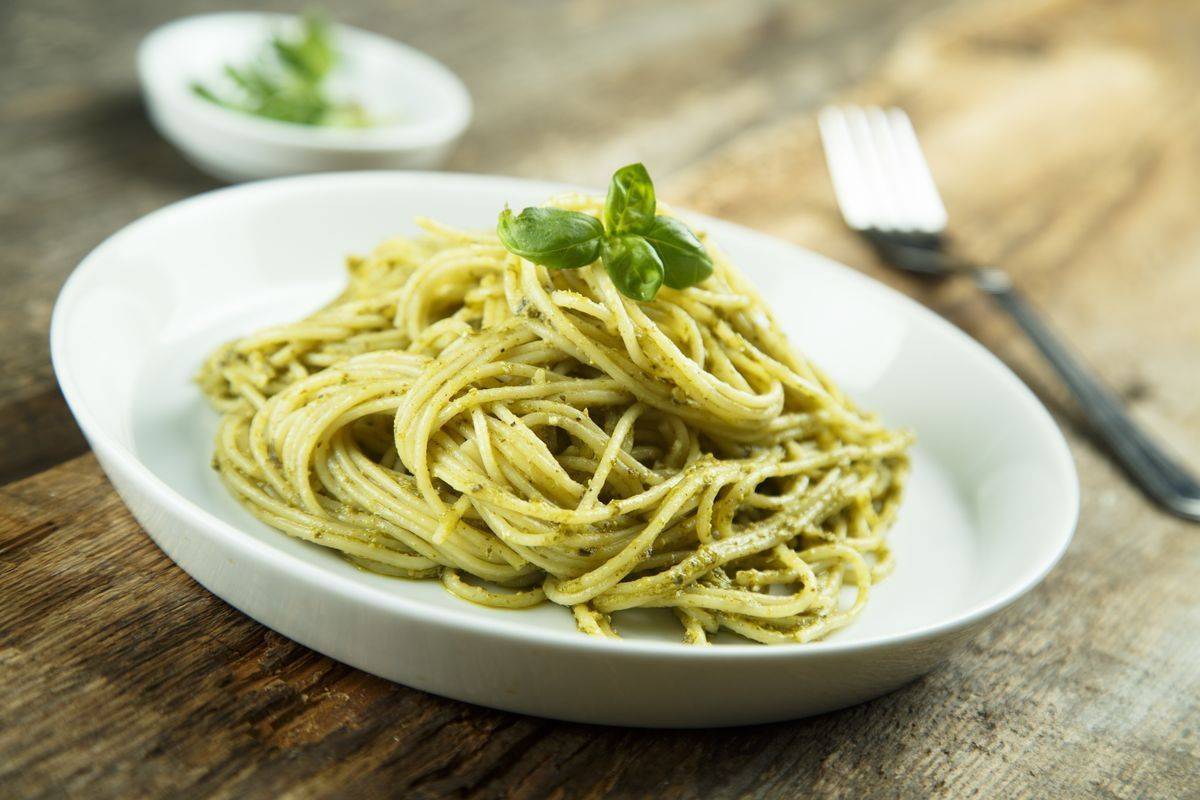
How to make pasta with pesto
- Start by preparing the dressing: take the fresh basil leaves and clean them with a clean kitchen cloth . Then place them in a glass with high sides. Add the peeled and cored garlic, the pine nuts, 1 pinch of salt and the grated cheese.
- At this point start blending intermittently, slowly adding just enough olive oil to obtain a creamy, homogeneous sauce with a typical bright colour. To obtain an even more vivid color you can break an ice cube into flakes and add it to the mixer.
- Then put a pot of water on the fire, bring to a boil and salt the water.
- Continue adding the spaghetti (or bavette) and cook them for the time indicated on the package.
- When cooked, drain the pasta reserving a cup of the pasta cooking water . Put the pesto in a large bowl, dilute it with a little cooking water, mix and add the spaghetti.
- Turn everything well in order to bind the pasta to the sauce, and finally, serve. Finish by decorating with fresh basil and a sprinkling of cheese if necessary. Your spaghetti with pesto are ready, enjoy your meal!
How about trying all our quick first courses ? Know that if you have a mortar at home you can prepare the sauce as per tradition, pounding all the ingredients until you reach the desired consistency. Furthermore, the more traditional technique avoids the classic increases in temperature that occur with the rotating blades of the mixer and can make the final result less bright .
How to make pesto alla genovese: recipe, tips and tricks
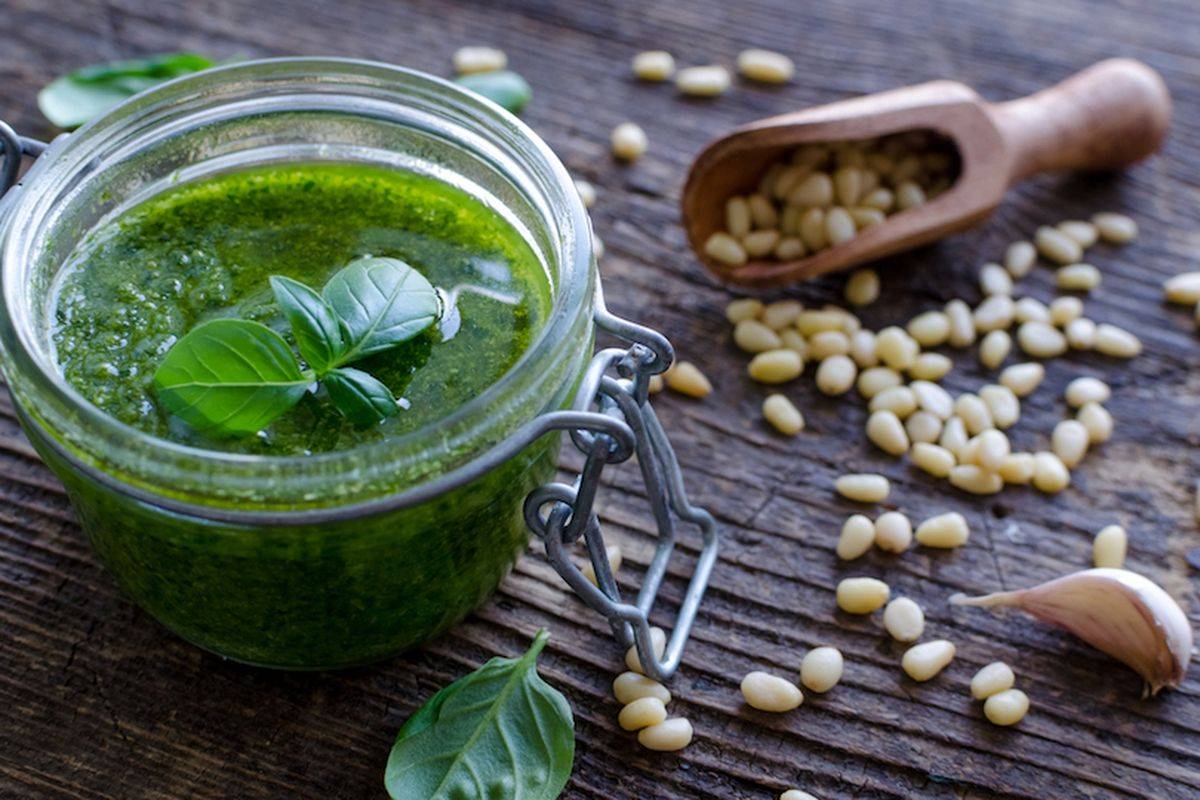
We understand that homemade pesto is certainly better than jarred pesto. But what are the secrets for obtaining a perfect and state-of-the-art sauce?
– First of all, as we have already said, working the pesto with a mortar certainly gives an extra touch to this recipe, because all the elements are crushed and not cut. Furthermore, it would be good to follow a precise order during the processing phase.
– We start with the garlic, which is crushed with salt, then we move on to the pine nuts, and only then to the basil, the cheese and finally the oil. And it is precisely during these phases that the real trick of this sauce lies: the dosages.
Taste to verify that the sauce is not too savory and measure out the oil and cheese well to achieve a perfect creaminess !
When pesto meets tradition
If you want to get even closer to tradition, we suggest you serve trofie, trenette or testaroli with your pesto, the main types of pasta that are combined with the famous basil sauce.
And if instead you are looking for a richer variant, you can add green beans and potatoes to the pasta with pesto, an ancient preparation which is still very common today. All you have to do is cut the vegetables into small cubes and blanch them in salted water until they are cooked. Add them to the pasta during the creaming phase. And bon appetit!
Recipes with pesto: some delicious ideas
We've seen everything about tradition, but that doesn't mean you can't experiment with delicious dishes that go a little out of the box. In fact, pesto goes perfectly with many other ingredients, so you can really try many dishes!
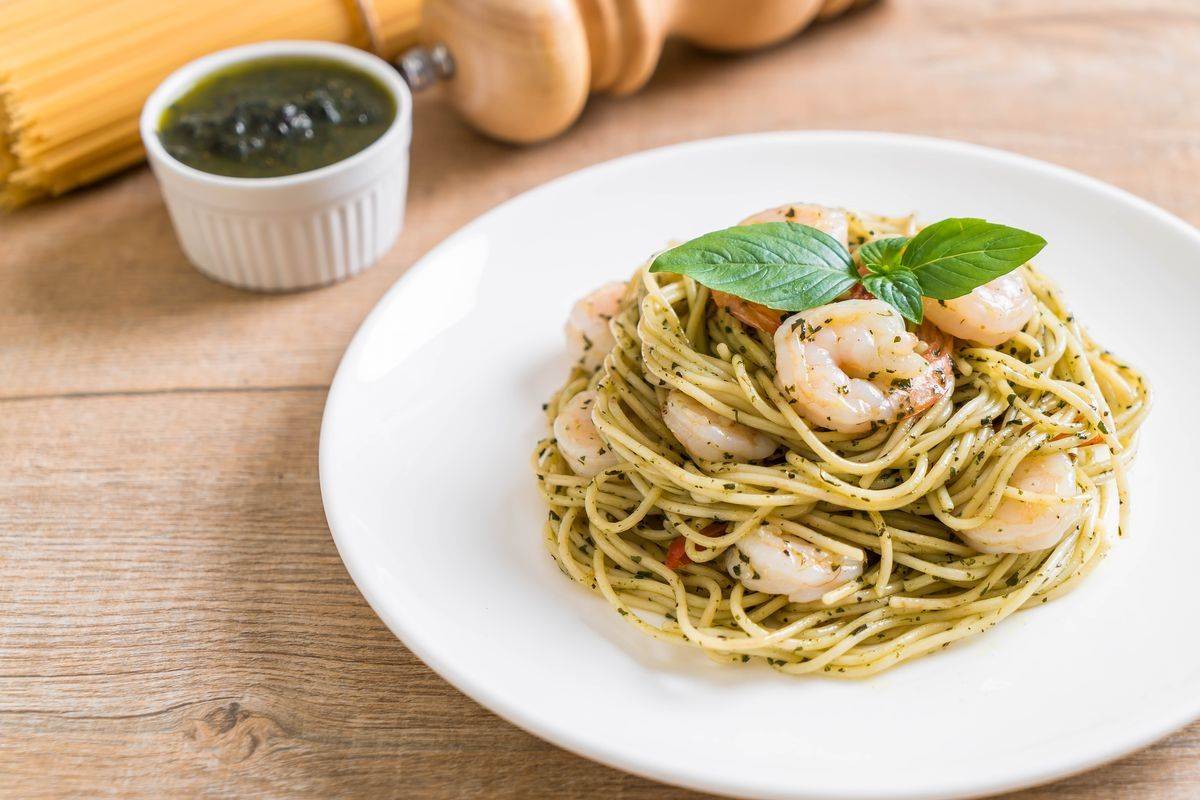
– Cold pasta with pesto: to prepare this dish we recommend a short pasta format (farfalle, mezze Maniche or fusilli will be great). Once cooked and left to cool, season it with pesto and if you want other delicious ingredients , such as mozzarella cubes, cherry tomatoes, olives and anchovies!
– Pasta with pesto and cherry tomatoes: simple, fresh, effective. Just add a handful of raw cherry tomatoes to transform a plate of pasta into a dream!
– Pasta with pesto and prawns: fish with pesto goes very well. Pan-seared some prawns and add them at the end , you'll see what a bomb!
– Pasta with pesto, squid and potatoes: you know that delicious pasta that is prepared with squid and potatoes, where a lot of basil leaves are added at the end. Here: try it with homemade pesto, you won't be able to do without it!
We have included it among our best summer first courses , but this pasta is tasty all year round .
storage
Pasta with basil pesto can be kept for a maximum of 1 day in the fridge , well covered in transparent film, however we recommend consuming it at the moment to fully appreciate its unmistakable aroma.
Instead, basil pesto can be preserved in many ways: you can safely leave it in the pantry, well preserved inside a vacuum-packed jar, for about 2-3 months . Once opened, you can instead leave it in the fridge for about a week, just remember to add oil as needed so that the sauce does not dry out. Or you can freeze it , or create nice and practical basil cubes that are very similar to pesto!
History of pesto: the origins of the Ligurian sauce
It is not clear where Genoese pesto really came from, it seems certain instead that the first to speak officially of it was the writer Giovanni Battista Ratto , in his book "La Cucina genovese" which was published in the second half of the 19th century. It seems that the recipe reported in the text was not completely relevant to the one we know today, however the reason is very simple: the Ligurians and even more the Genoese were a people who lived on exports thanks to the outlet to the sea, for this reason the cheese used it could change according to the exchanges of the moment . Furthermore, even the basic herbs of the recipe were not limited to basil, given its short seasonality, but could also be extended to other qualities such as marjoram or similar.
As the name indicates, the sauce derives from pounding the ingredients with a mortar , furthermore it seems that it derives from the more ancient garlic-based agliata which was also used to preserve food for longer.
One last curiosity about the history of pesto? This part is not certified in any writing but refers more to local legends that tell of how it was a monk from a convent in the town of Prà who created the sauce. In fact, it seems that he picked the basil from the monastery garden and then combined it with other simple ingredients they had in the pantry, including unused cheese rinds .
Riproduzione riservata © - WT


